Drought-deciduous plants before and after the rain
Drought-deciduous plants have adapted to drop many or all of their leaves in dry seasons and/or drought to conserve water.
Then revive with a quick, vibrant growth of leaves upon arrival of the rains, followed by flowers.
Thus they can be an inspiration for us to similarly conserve in times of scarcity, then celebrate/share in times of abundance. They show us the seasons.
All plants featured (except for one receiving greywater) get all their water only from passively harvested rain and stomwater where on average we receive 11 inches of annual rainfall (but this year, in our neighborhood, we are on track to receive less than the average).
They do NOT get any irrigation water from a municipal supply or well.
If these plants got supplemental irrigation in the form of virgin municipal water or well water in dry times they would not drop as many leaves or for as long, but then they would be consuming more water, when they could be helping us conserve it.
Water-conserving/recycling options for supplemental irrigation could include rainwater harvested in tanks, on-site greywater, and air-conditioning condensate.
All, but one of these featured plants is native to the Tucson Basin, and thus exceptionally well-adapted to our climate, soil, and wildlife.
The following photographs were taken in the summer of 2022 (a drought year) in the Dunbar/Spring neighborhood in Tucson Arizona.
Before photos were taken after our hottest, driest month of June.
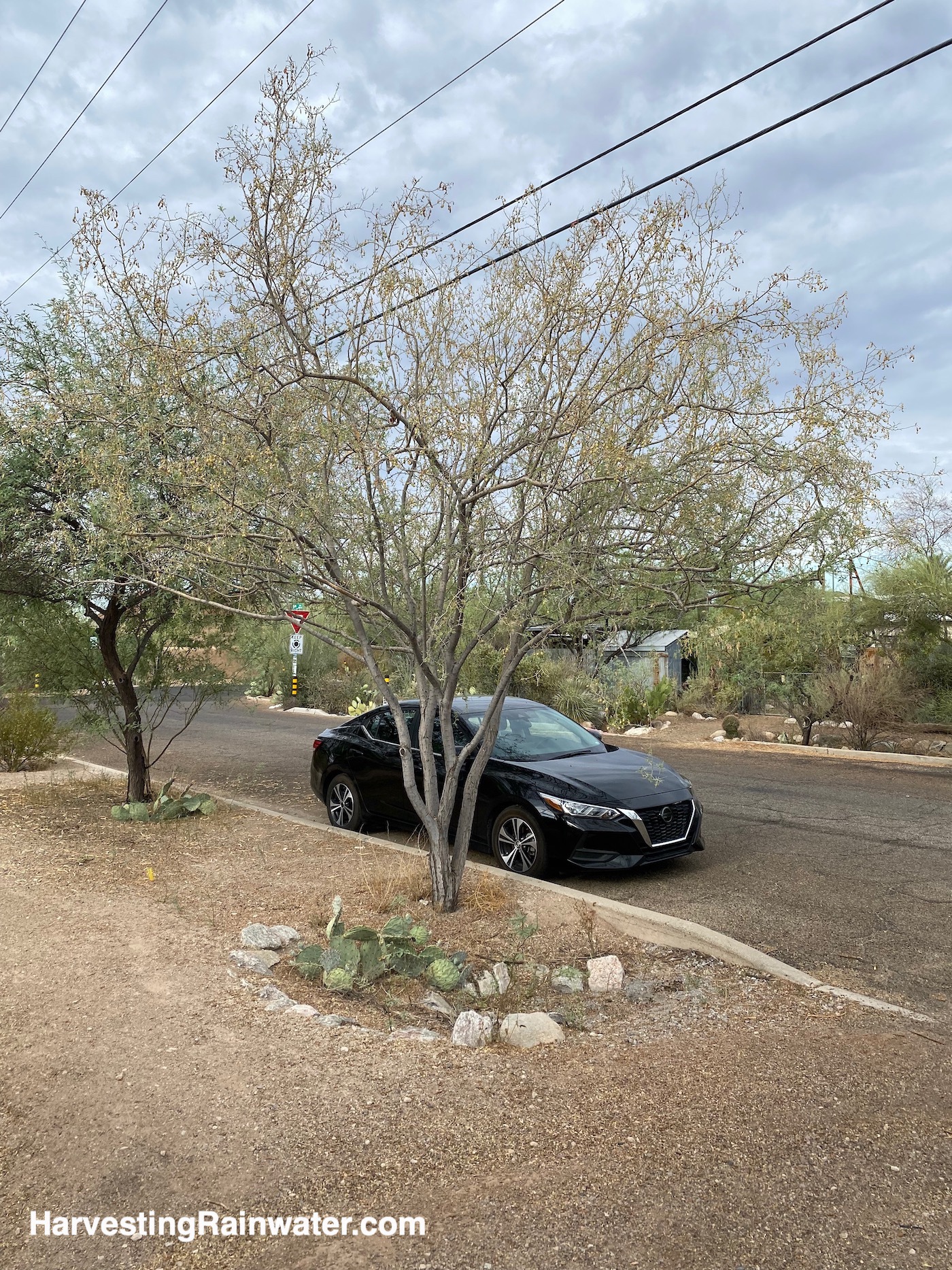
Photo: Brad Lancaster, 7-1-22
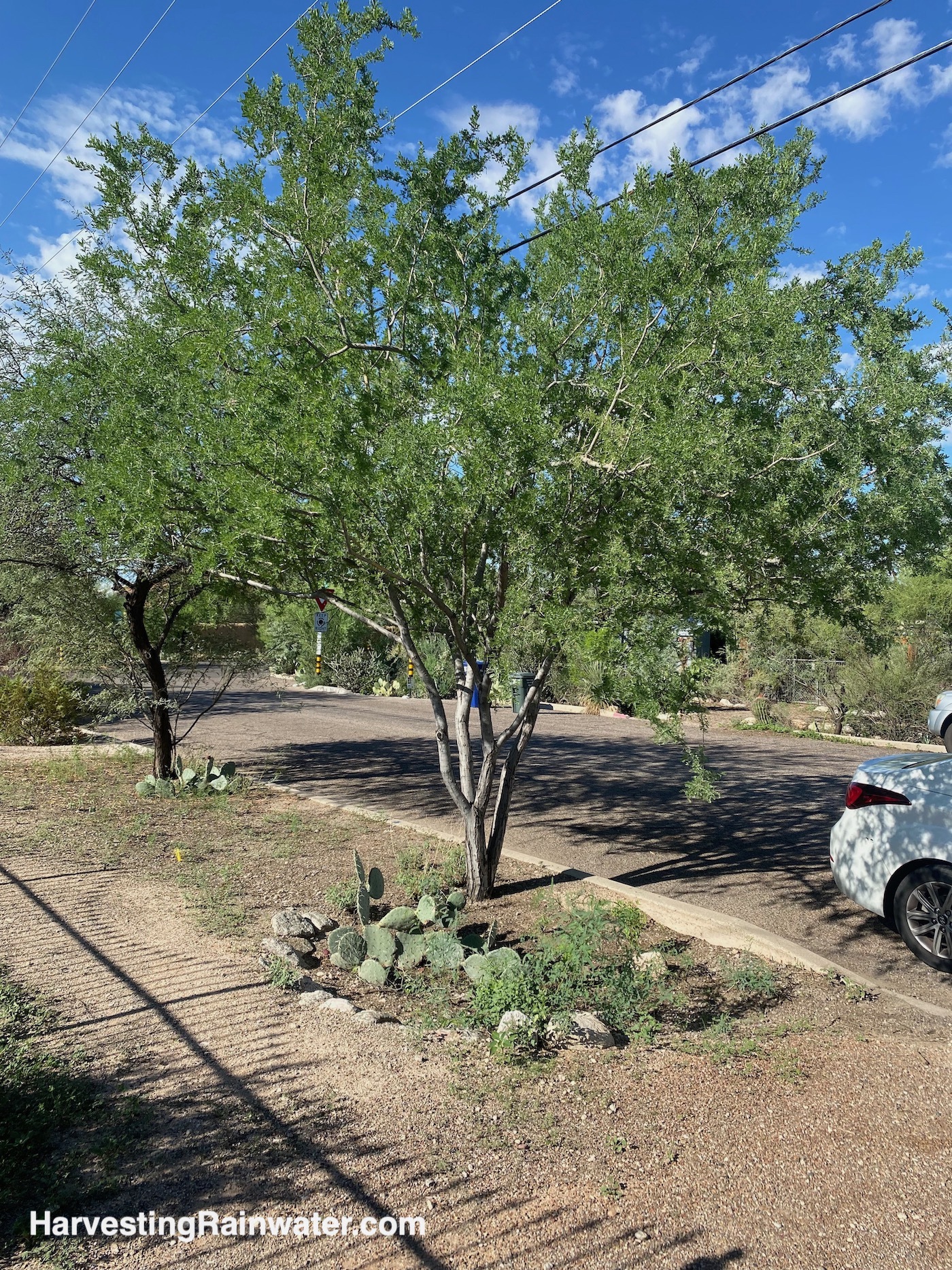
Photo: Brad Lancaster, 8-26-22
I share these images with you, so you can see the stark seasonal differences in the plants’ appearance, in hopes that you’ll better appreciate these plants, and so you won’t mistake them for dead and remove them in the dry months.
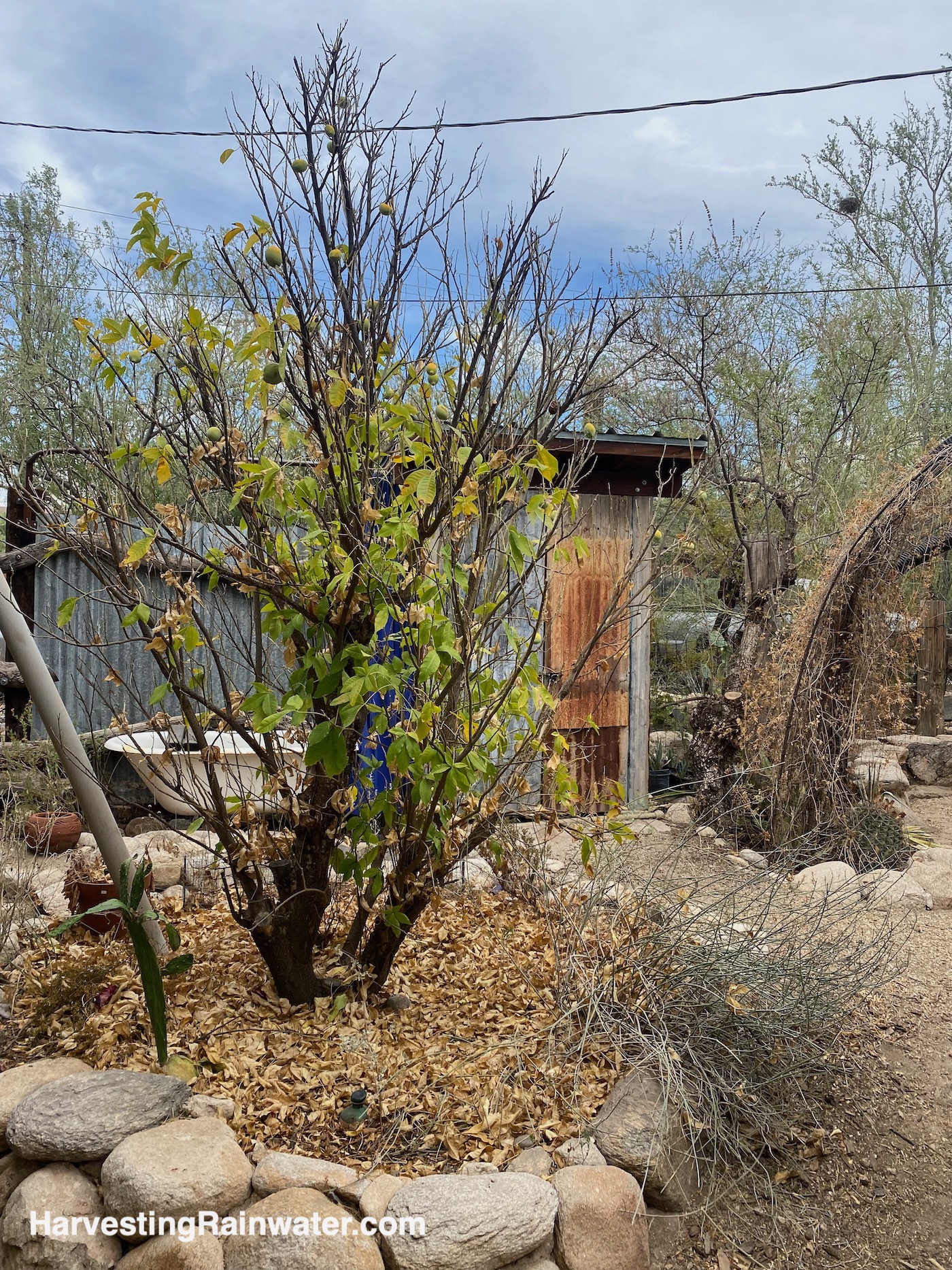
Very drought hardy fruit tree, native to central Mexico, that drops its leaves in our hottest, driest month.
This tree receives supplemental irrigation in the form of household greywater, but the volume of that greywater is lowest in the month of June when some of the family are often away on vacation.
Photo: Brad Lancaster, 7-1-22
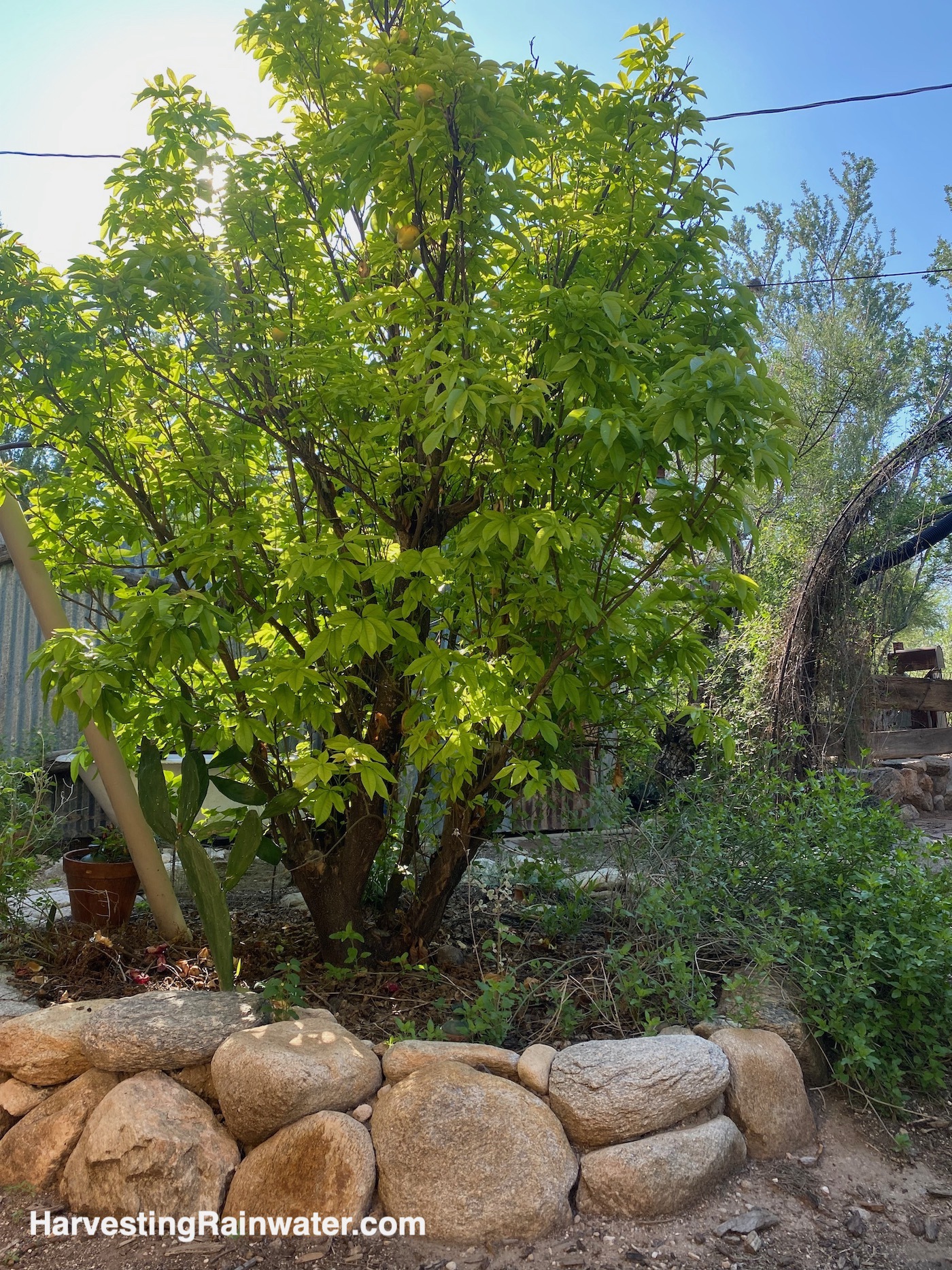
Very drought hardy fruit tree, native to central Mexico, that erupts with new leaves after our first good summer rain.
Supplemental irrigation in the form of greywater rebounds when family members return from vacation.
Chuparosa (Justicia californica) understory plant on right.
Photo: Brad Lancaster, 8-26-22
By dropping their leaves in dry times, these plants loose less water via evapotranspiration through their leaves.
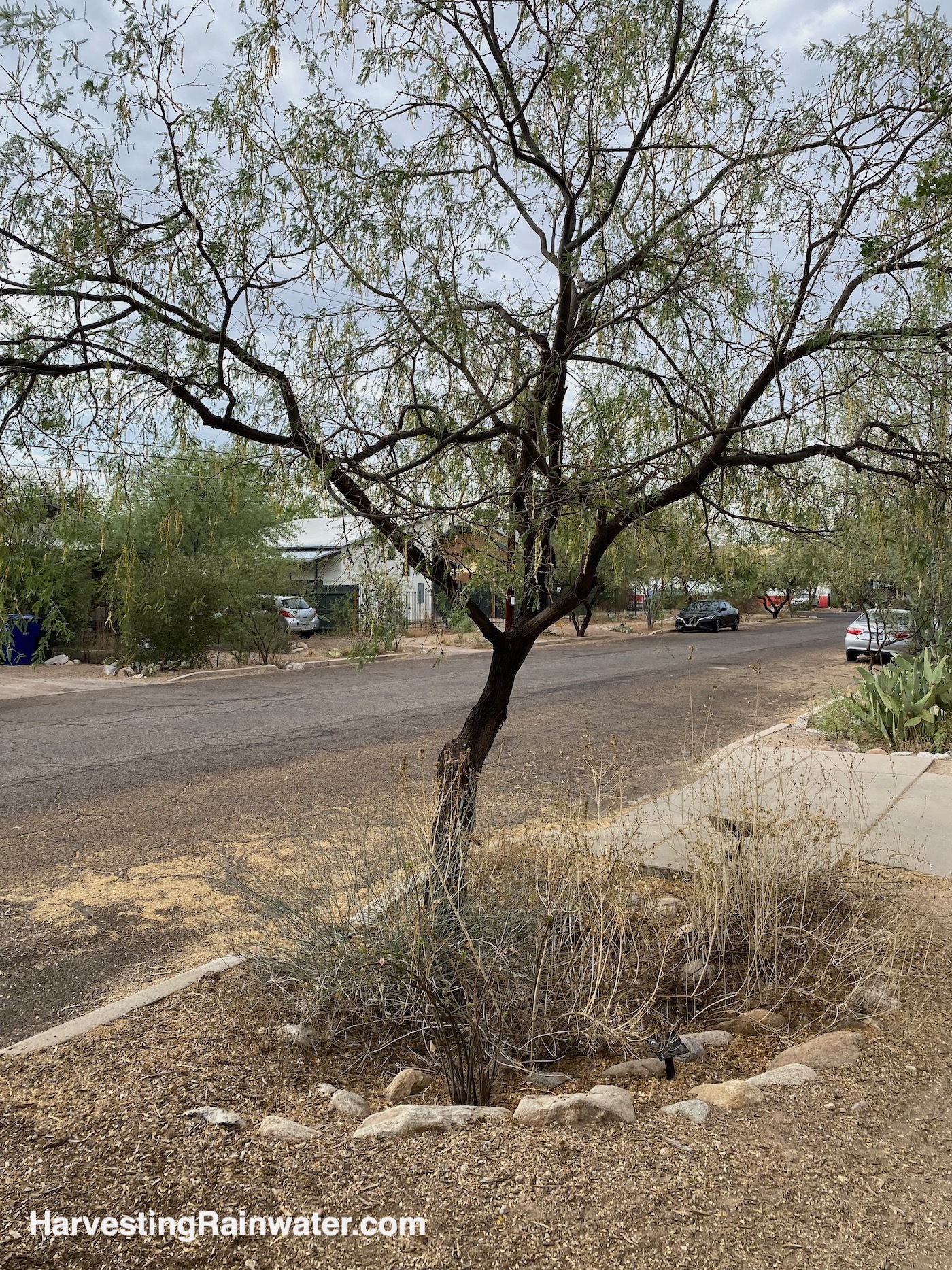
They are planted in a street-runoff-harvesting rain garden below the canopy of a velvet mesquite tree.
Photo: Brad Lancaster, 7-1-22
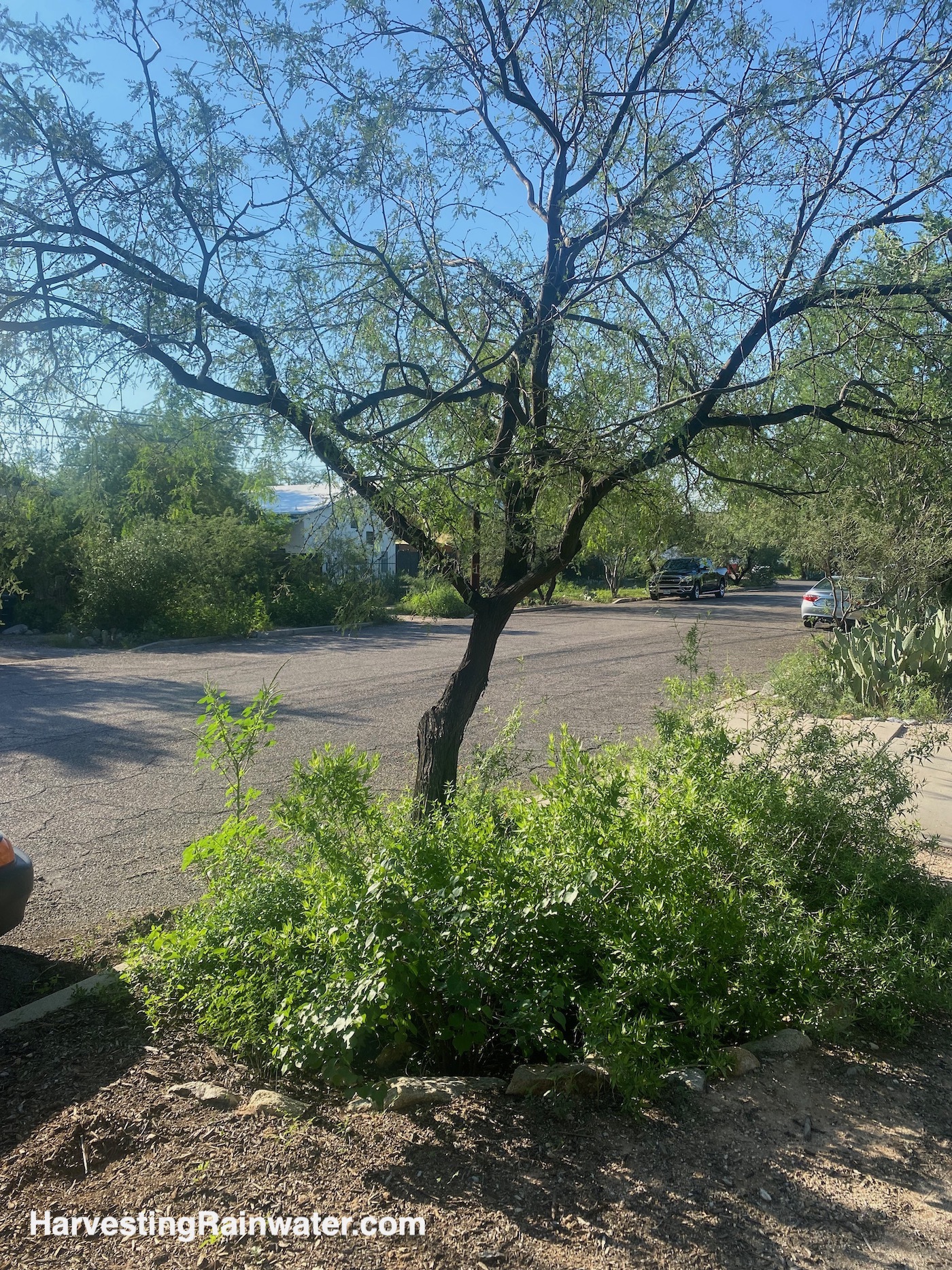
They are planted in a street-runoff-harvesting rain garden below the canopy of a velvet mesquite tree.
Photo: Brad Lancaster, 8-26-22
With many of these drought-deciduous/drought-dormant plants if you try to bend one of their leafless twigs and it bends, instead of immediately snapping in two, it is very alive.
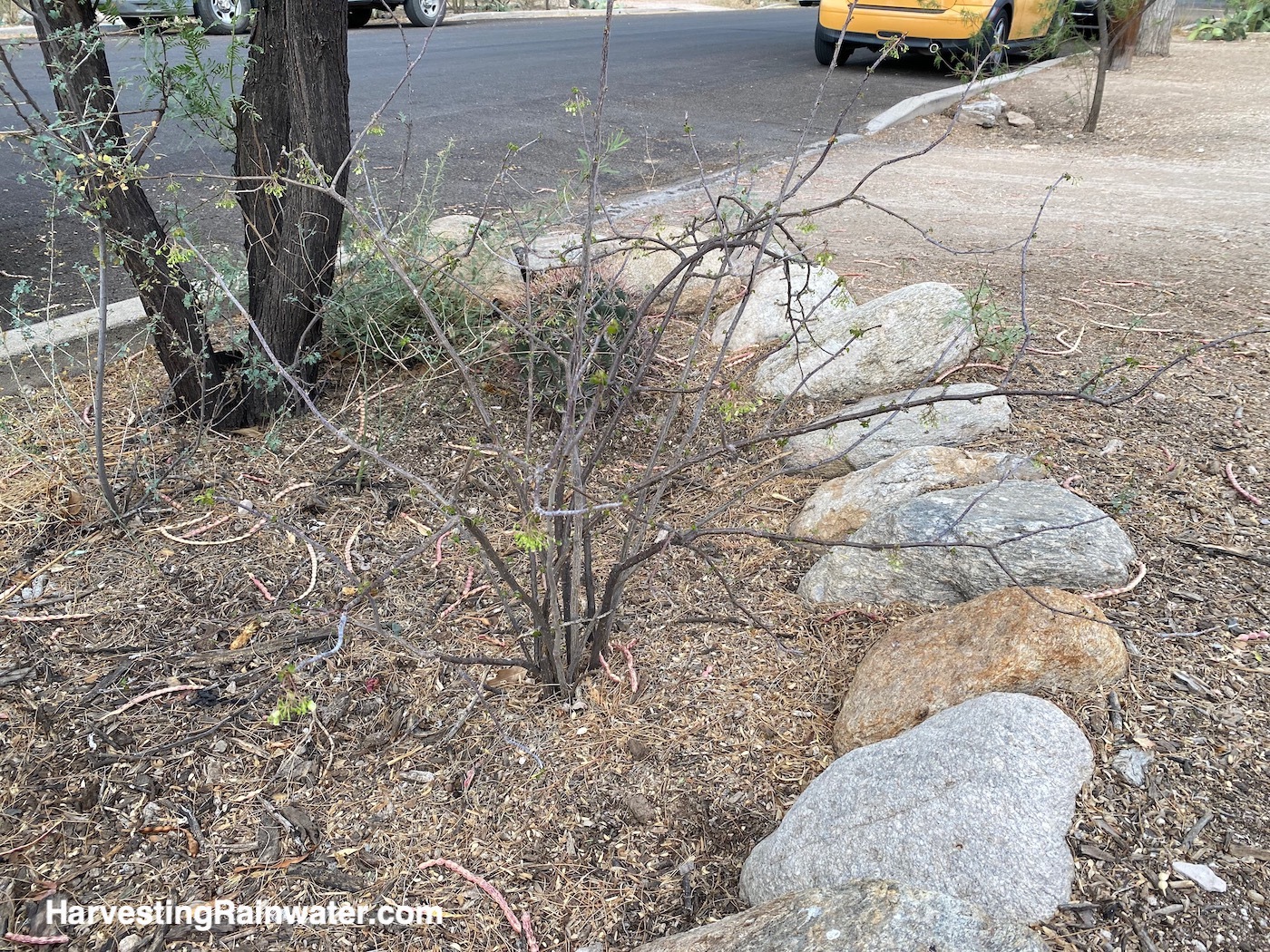
It typically starts to leaf out a one to three weeks before the first rainfall.
Photo: Brad Lancaster, 7-1-22
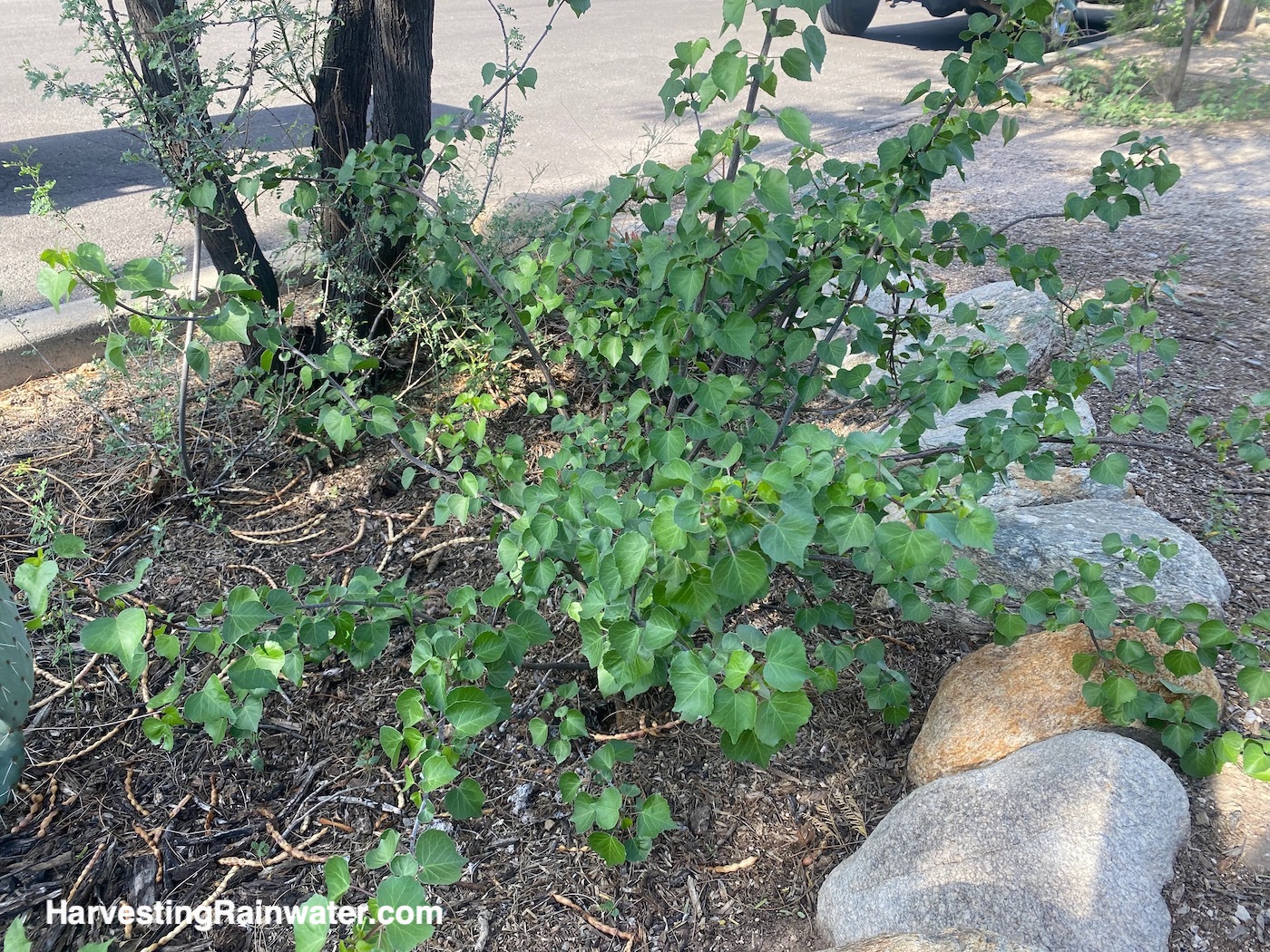
The leaves don’t get big until after the first good rainfall (at least 0.5 inch (13 mm).
Photo: Brad Lancaster, 8-26-22
If the drought-deciduous appearance is too stark for you, consider pairing a drought-deciduous plant with an evergreen plant as is the case below…
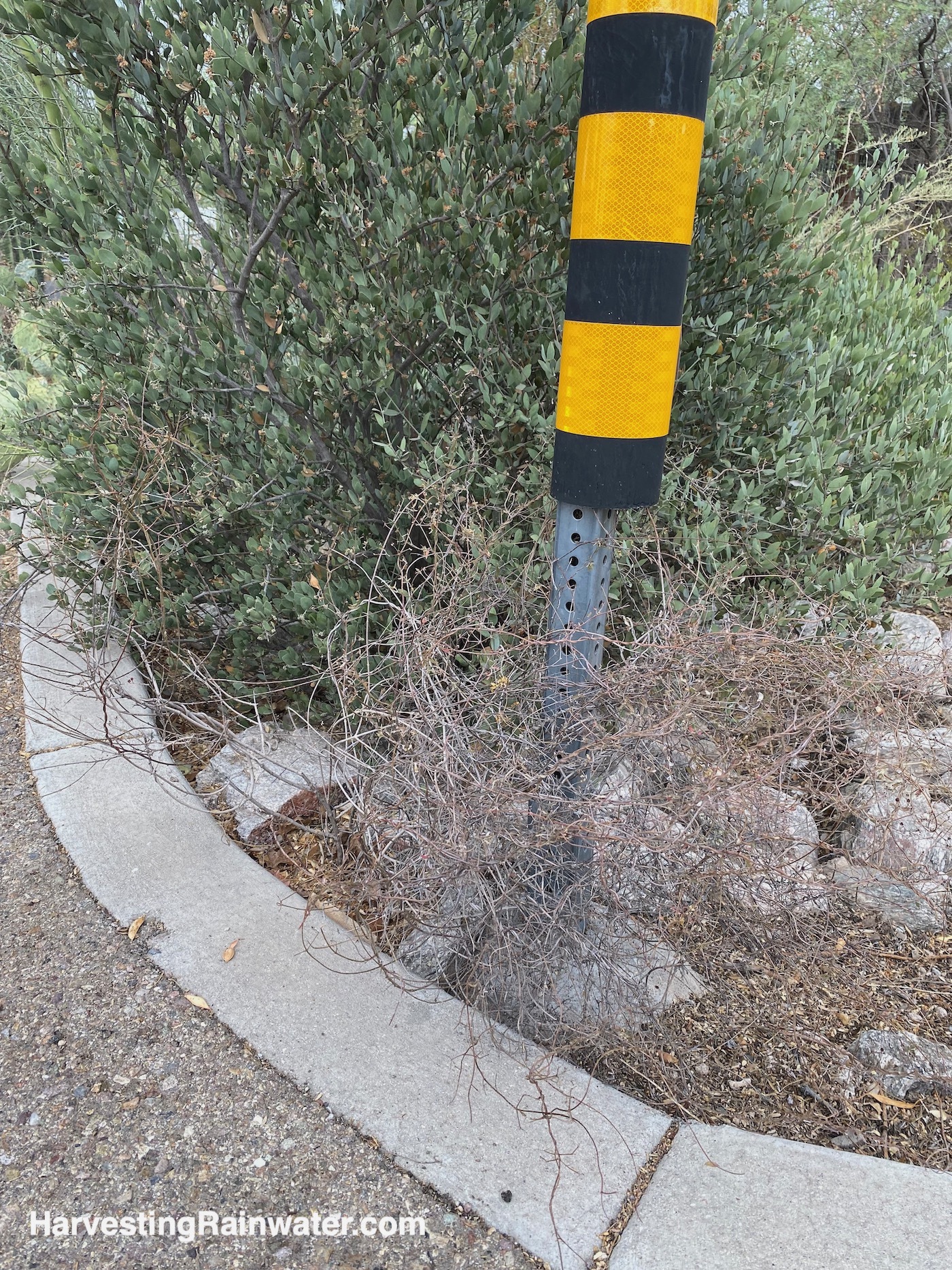
Behind the drought-deciduous vine is an evergreen jojoba shrub (Simmondsia chinensis).
Photo: Brad Lancaster, 7-1-22
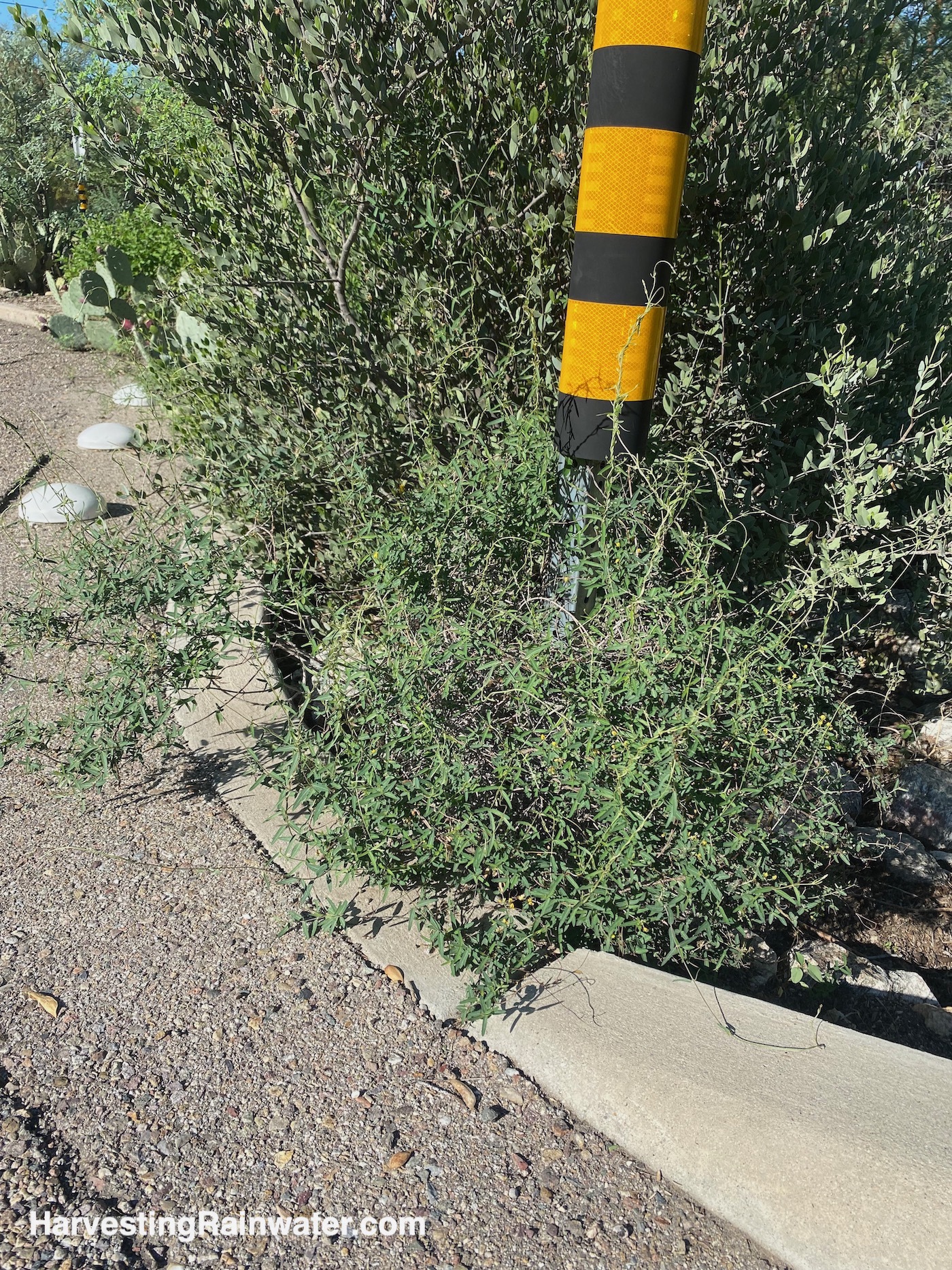
This vine works great in water-harvesting traffic-calming infrastructure where it can climb up bollards and sign posts.
Photo: Brad Lancaster, 8-26-22
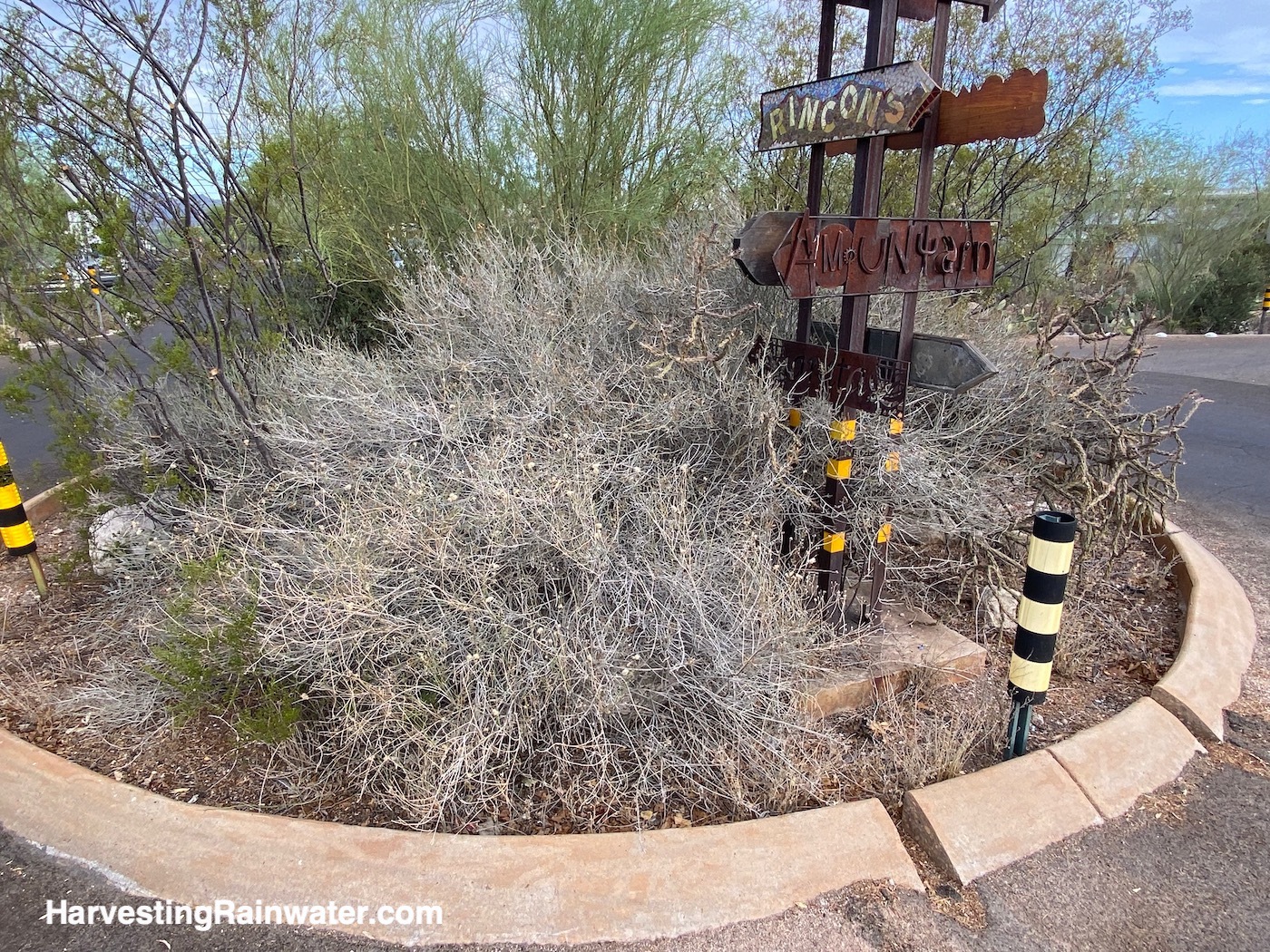
Evergreen foothills palo verde tree (Parkinsonia microphylla), creosote bush (Larrea tridentata), and staghorn cholla cactus (Cylindropuntia versicolor) in the background.
Photo: Brad Lancaster 7-1-22
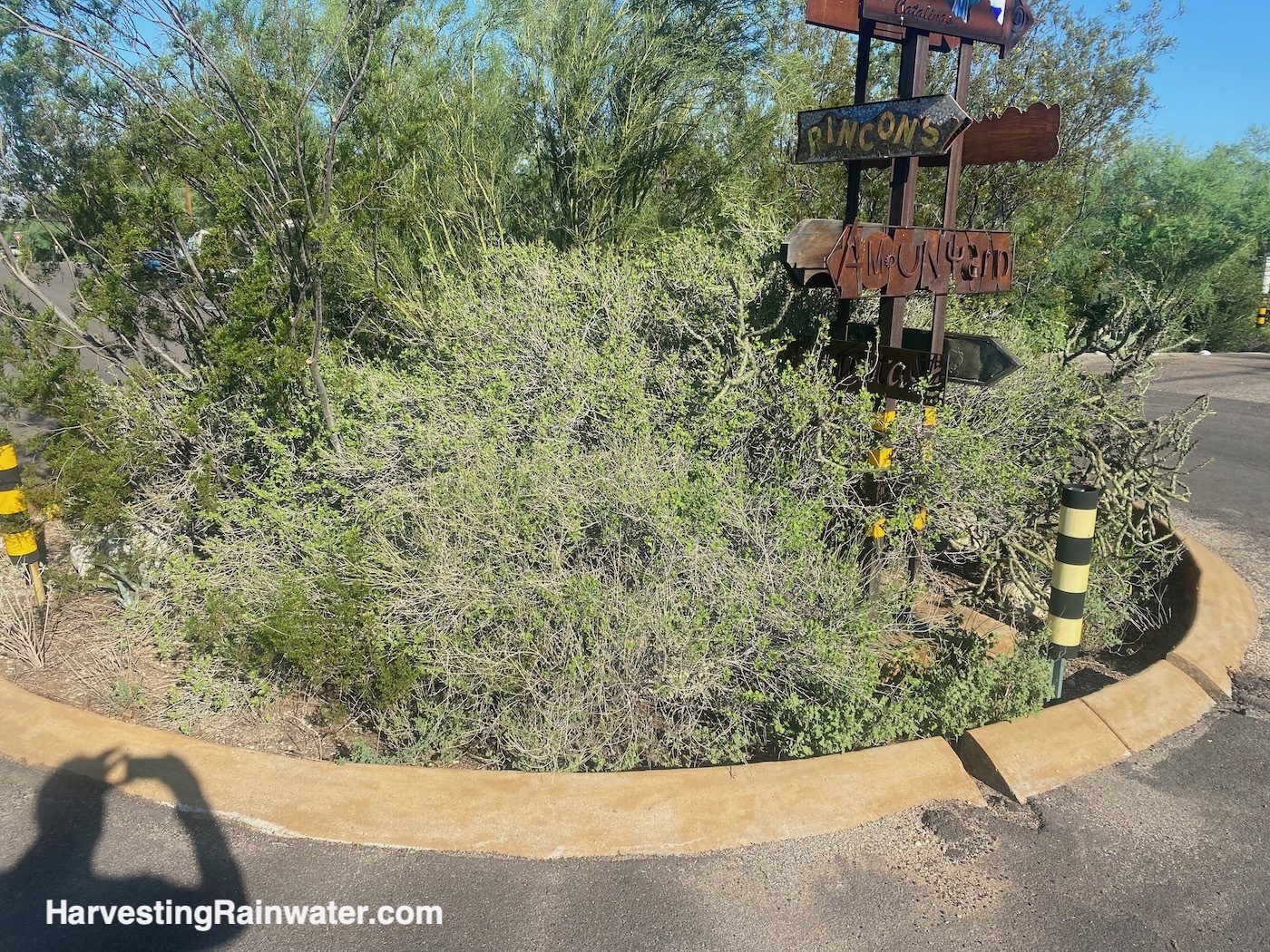
All are grown in a water-harvesting, traffic-calming round-a-bout.
Sometimes we prune the chuckwalla’s delight to a foot to 18-inch height in the dry season, then it rebounds in the wet season.
Photo: Brad Lancaster, 8-26-22
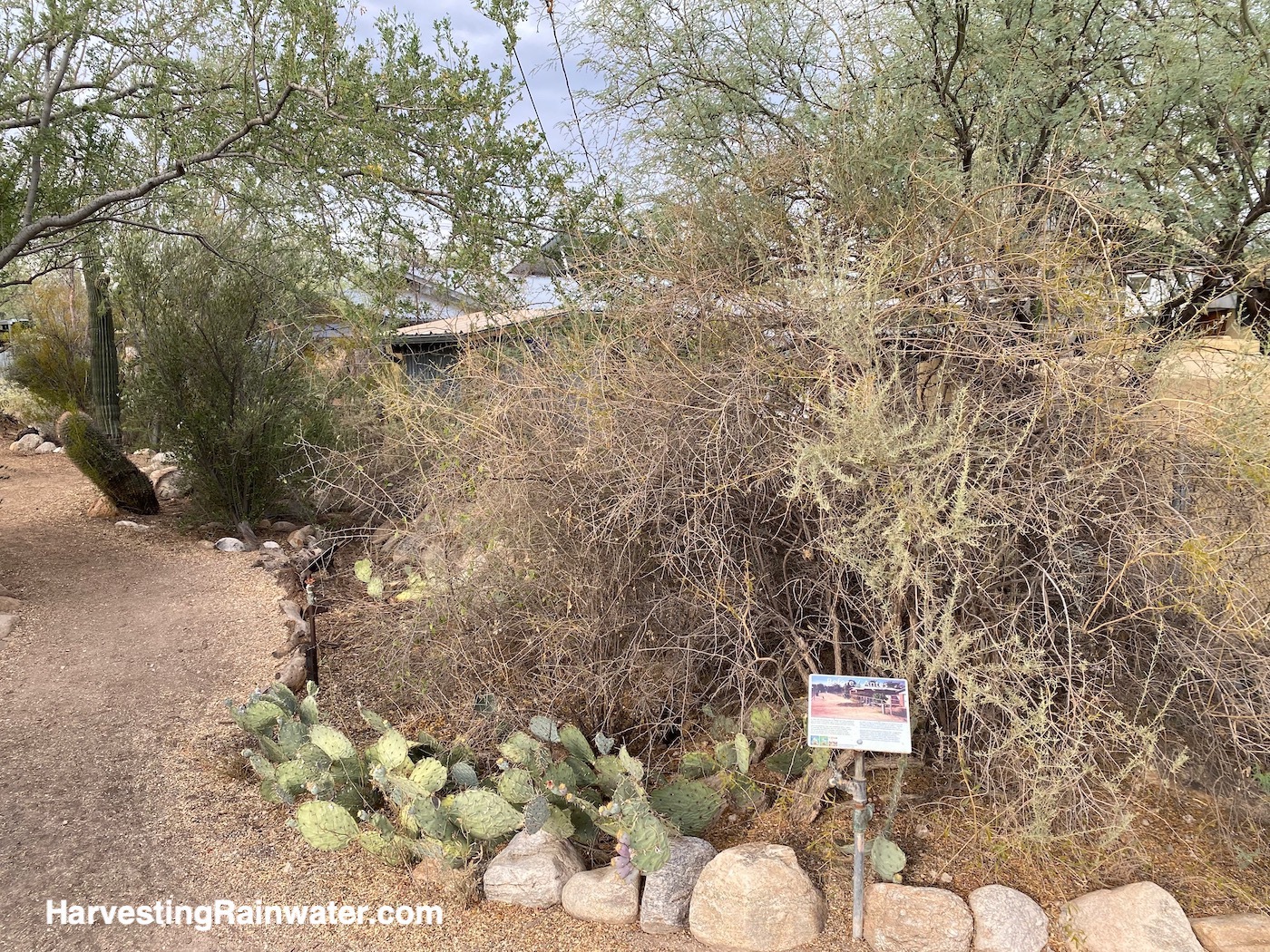
Evergreen prickly pear cactus (Opuntia engelmanii) and a small 4-wing salt bush (Atriplex canescens) the foreground.
Photo: Brad Lancaster 7-1-22
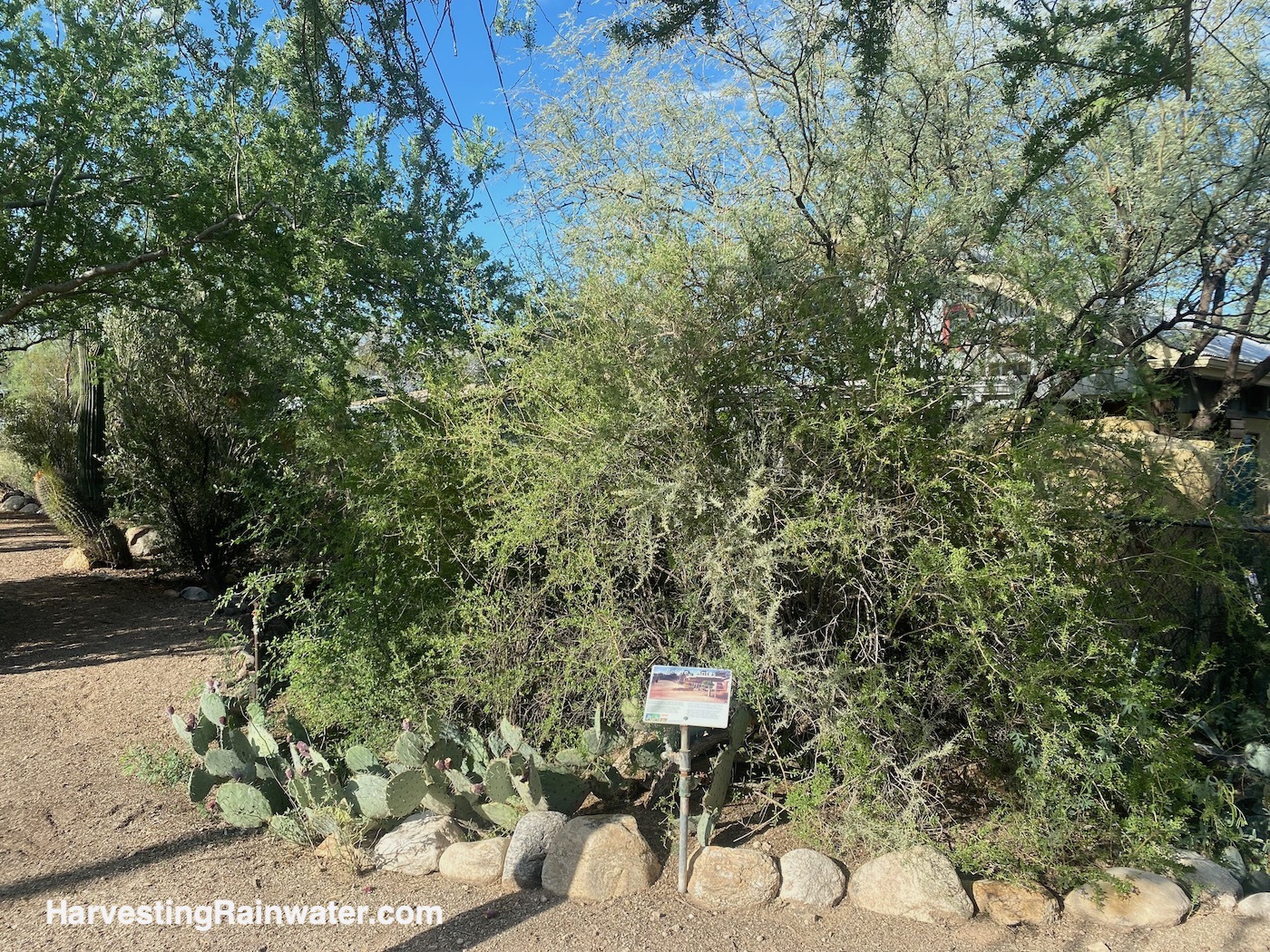
Evergreen prickly pear cactus (Opuntia engelmanii) and a small 4-wing salt bush (Atriplex canescens) the foreground.
Photo: Brad Lancaster 8-26-22
These examples are all from the Dunbar/Spring neighborhood where we are bringing back plants native to the Tucson Basin as we plant and steward rain-irrigated native food forests.
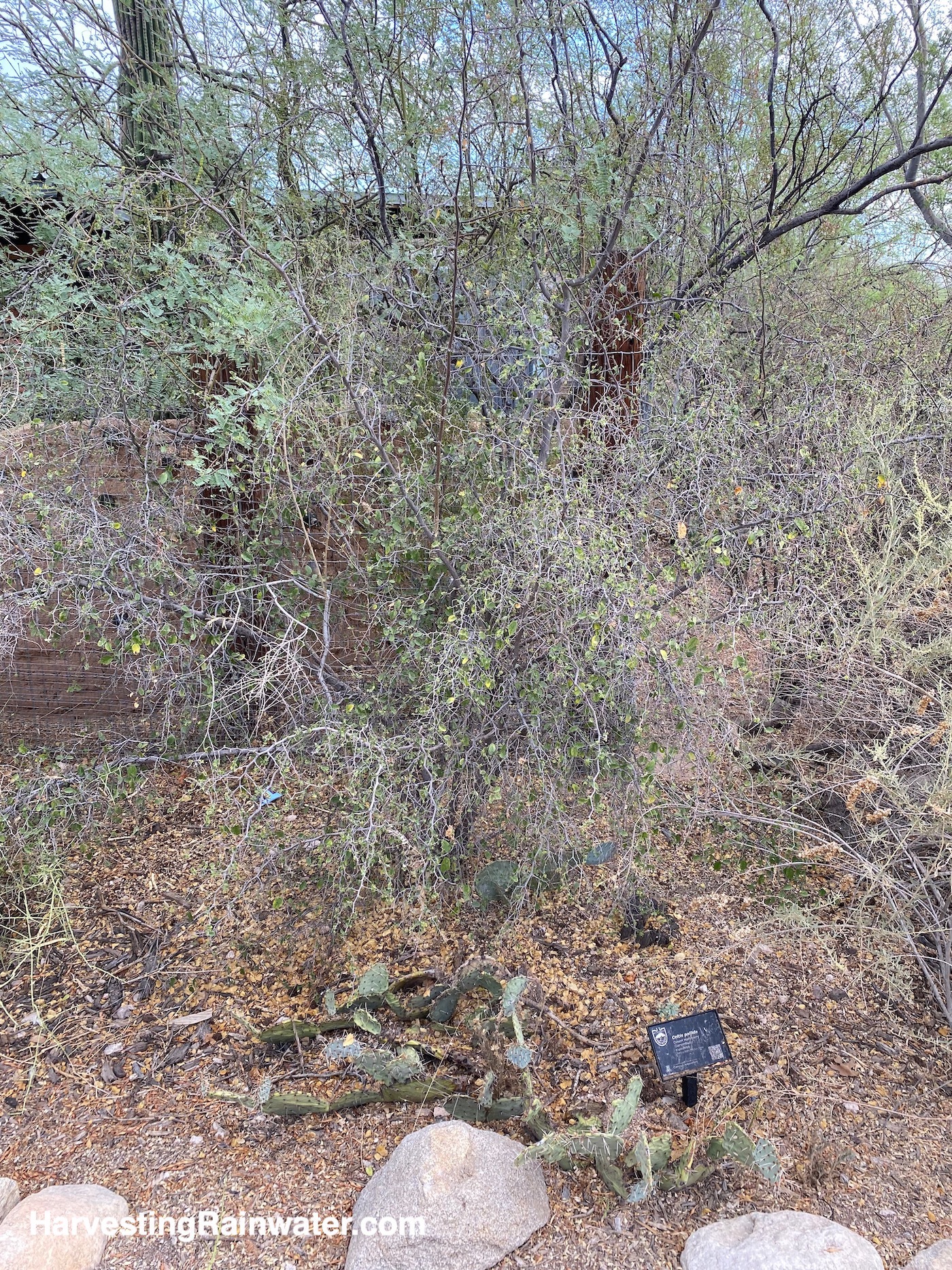
Note the multi-lingual plant ID sign below the plant.
Photo: Brad Lancaster, 7-1-22
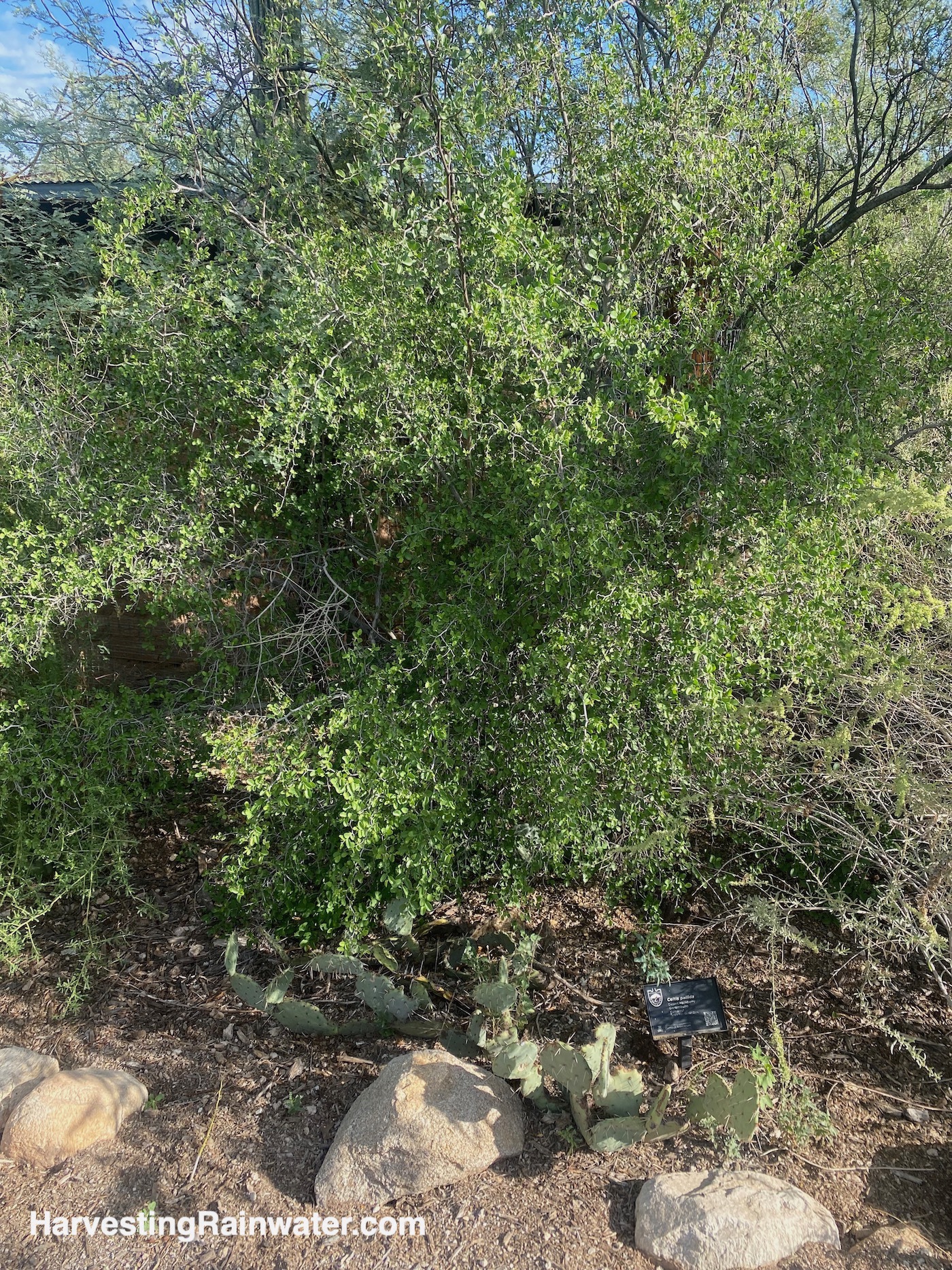
Note the multi-lingual plant ID sign below the plant.
Photo: Brad Lancaster, 8-26-22
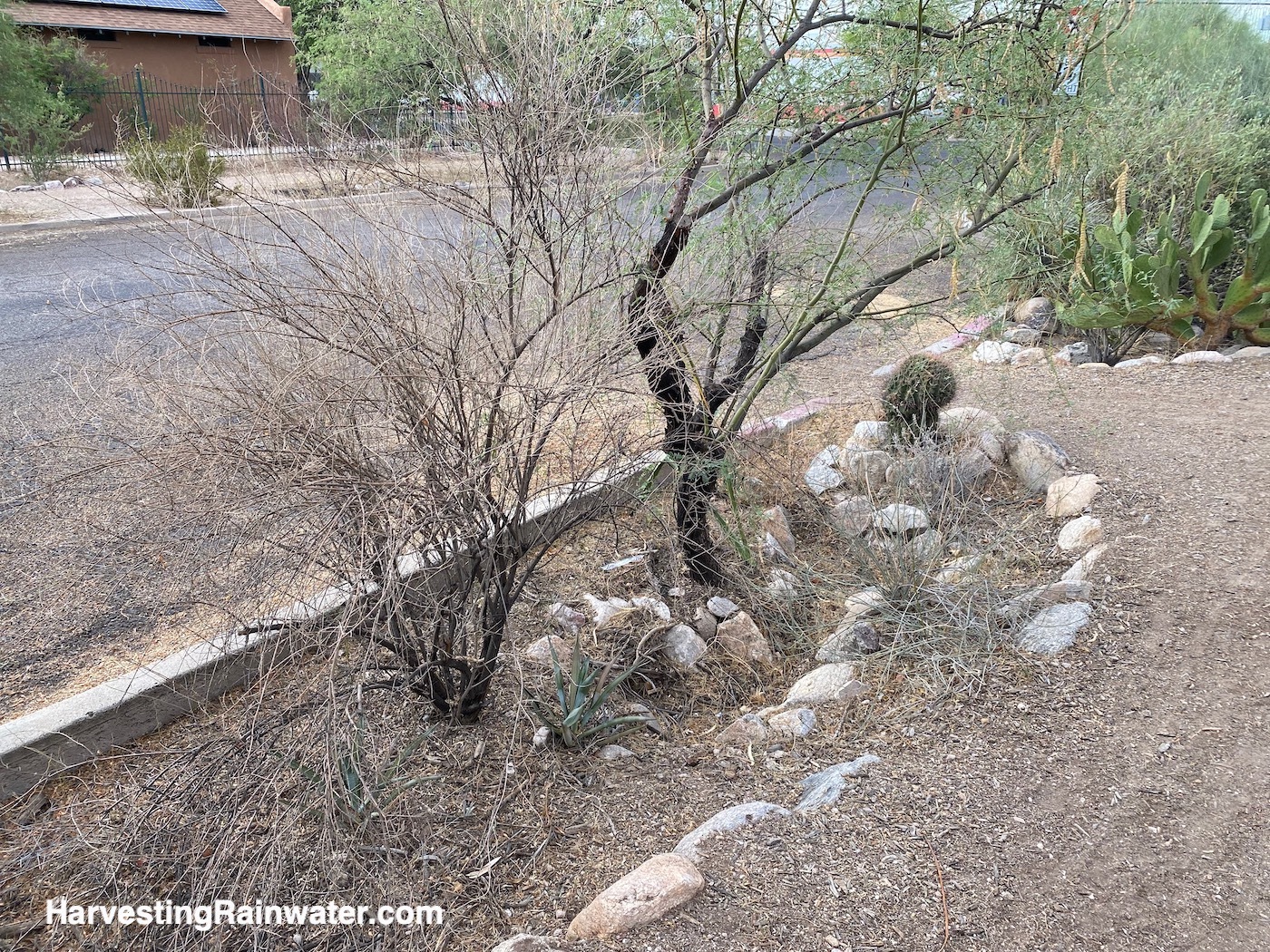
Young velvet mesquite tree (Prosopis velutina recently renamed Neltuma velutina) and barrel cactus (Ferocactus wislizeni) in the background.
Photo: Brad Lancaster, 7-1-22
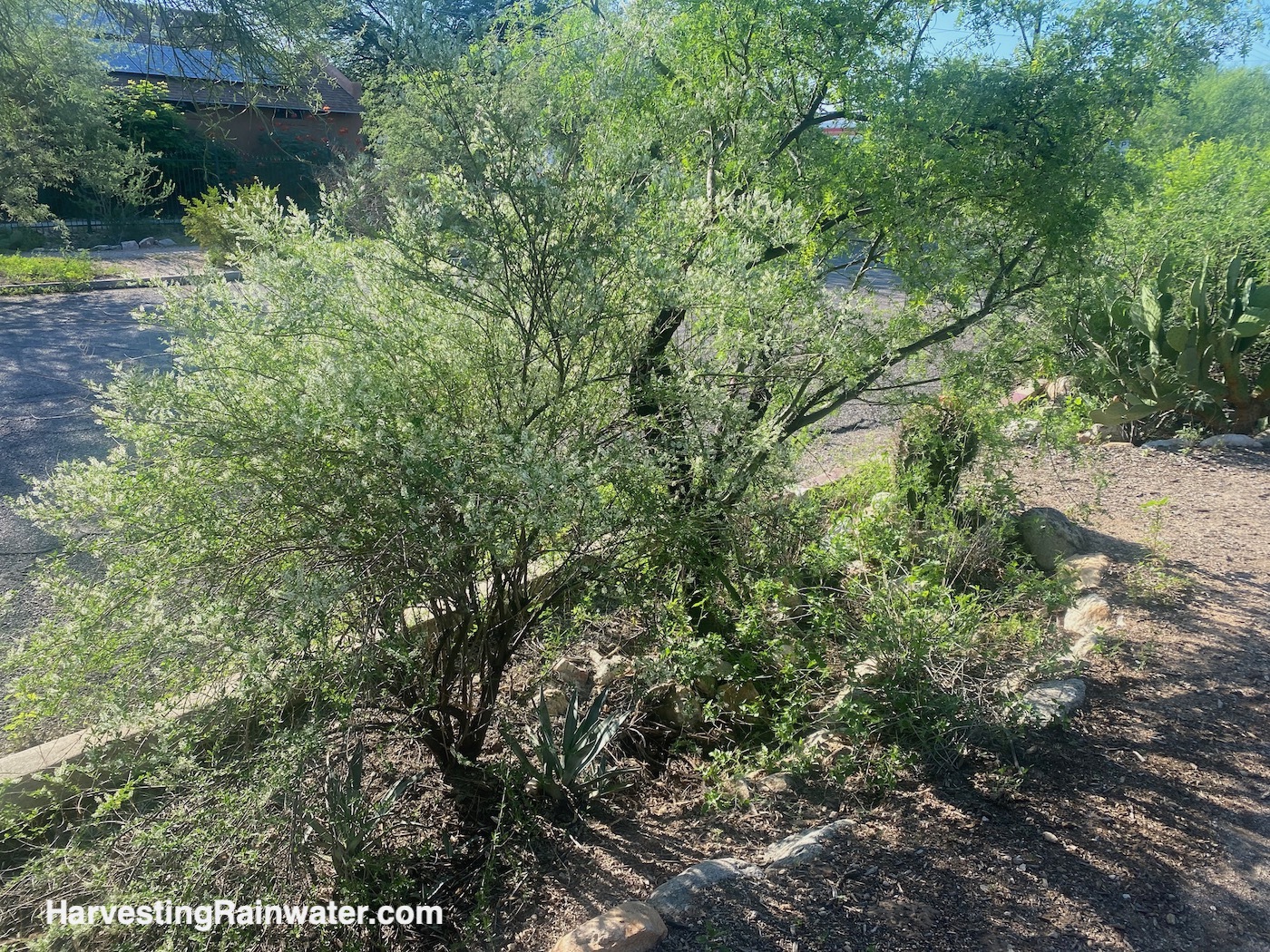
The white blossoms smell devine!
Photo: Brad Lancaster, 7-1-22
For additional resources on the ethnobotanical uses of these and other arid climate plants see here.
See the new, full-color, revised editions of Brad’s award-winning books
– available a deep discount, direct from Brad:

Volume 1
See the plant appendix for great plants for Sonoran Desert rain gardens, along with their ideal rain garden plating zone, ethobotanical uses, and deciduous or evergreen characteristics.
This is THE book to assess your free, on-site waters; then create an integrated plan to harvest them.

Volume 2
This book has step-by-step instructions to create many different types of rain gardens for many different contexts.
Also has chapters devoted to street runoff harvesting and greywater harvesting.
Case studies/real life stories will show you how others have succeeded and inspire you to do likewise.
